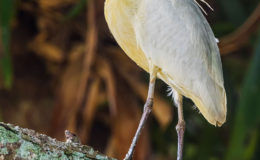
Capped Heron
The Capped Heron is mostly white with a distinctive black crown, but during nesting season their plumage becomes tinged with yellow.

The Capped Heron is mostly white with a distinctive black crown, but during nesting season their plumage becomes tinged with yellow.
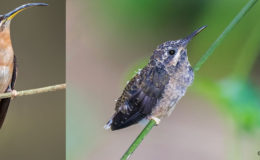
The Rufous-breast Hermit is a large hummingbird that inhabits forest understory, often near running water.
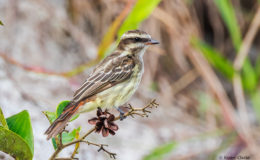
The Piratic Flycatcher is so named for its tendency to appropriate the dome-shaped nests of other birds such as the Yellow-rumped Cacique.
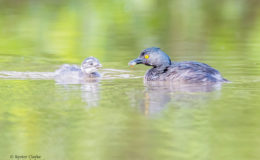
The Least Grebe is a very small waterbird often found near freshwater ponds and marshes.
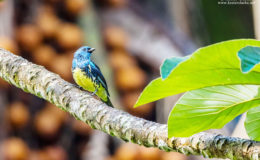
The Turquoise Tanager is mainly dark blue, with turquoise edging to the longest wing feathers and a yellowish lower underparts.
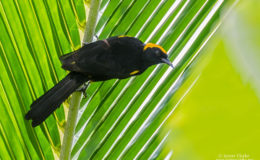
The Moriche Oriole is usually found in areas where the Moriche palm tree (Mauritia flexuosa) occurs.
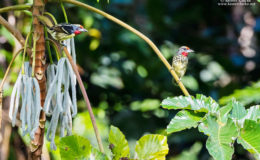
Male Black-spotted Barbets have an orange-red forehead and throat and a yellow chest with brown streaks on the side of the belly.
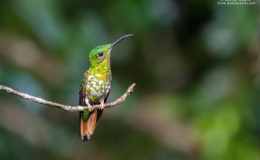
The Crimson Topaz is among the largest of all hummingbirds, second only to the Giant Hummingbird found in the Andes.
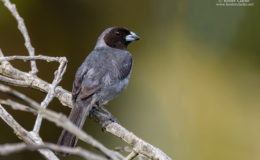
The Black-faced Tanager prefers grassland and pastures with low trees and shrubs where it forages for berries, seeds and some insects.
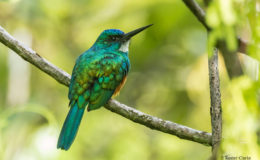
The Green-tailed Jacamar is a Guiana shield endemic and feeds mainly on flying insects which it catches by sallying out from exposed perches.
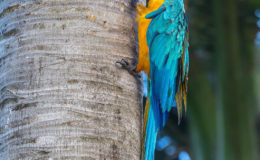
Blue-and-yellow Macaws usually mate for life. They prefer to nest in dead palm trees as is the case here in the Botanical Gardens and they feed on a wide range of fruits, particularly palm nuts and leafbuds.
Adult male has bright orange body plumage. The wings are black with pale orange to creamy-white edges.
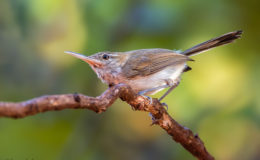
Long-billed Gnatwrens actively forage in the undergrowth and vines of dry forests where they eat mainly insects.
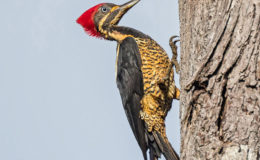
The Lineated Woodpecker is a large, black woodpecker with a red crest and a white-barred under belly and chest.
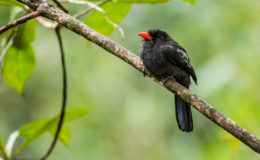
The Black Nunbird is mostly glossy blue-black with white-grey edges on its wings and a bright orange-red beak from the puffbird family.
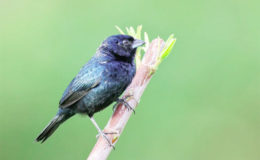
Males of this species have a jumping routine with a persistent call, usually from a fence post or long grass stalk.
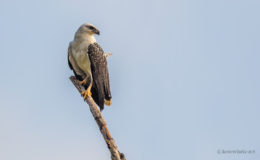
The White Hawk has an all-white head and body, while its upper wings are black.
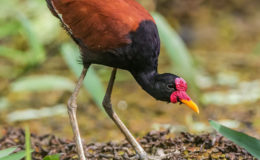
Wattled Jacana have very large feet and claws which distribute their weight and allow them to walk on floating vegetation as they search for insects, invertebrates and seeds near the water’s surface.
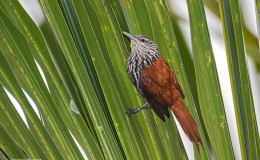
The head, neck and underparts of the Point tailed Palmcreepers are black and boldly streaked with white, contrasting with the bright chestnut brown of their back, wings and tail.
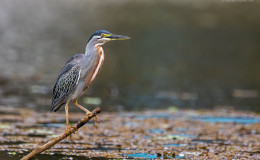
Striated Herons (Butorides striata) are often seen standing still at edge of ponds and trenches where they wait to ambush prey such as small fish, frogs and insects.
The ePaper edition, on the Web & in stores for Android, iPhone & iPad.
Included free with your web subscription. Learn more.